What Is the Best Label for Hot and Cold Food Packaging?
Whether you’re packaging piping hot meals or chilled delicacies, the labels you choose are just as important as the food itself. From food trucks to catering services to small food businesses, packaging labels need to withstand temperature extremes while still providing crucial information like ingredients, branding, or cooking instructions.
But here’s the million-dollar question: What is the best label for hot and cold food packaging? Choosing the right label depends on durability, adhesive strength, and compliance with food safety standards.
In this blog, we’ll break down the key factors and help you pick the perfect label for every temperature zone—whether it’s for small food packaging, cold food packaging, or hot food packaging.
Why Label Choice Matters for Food Packaging
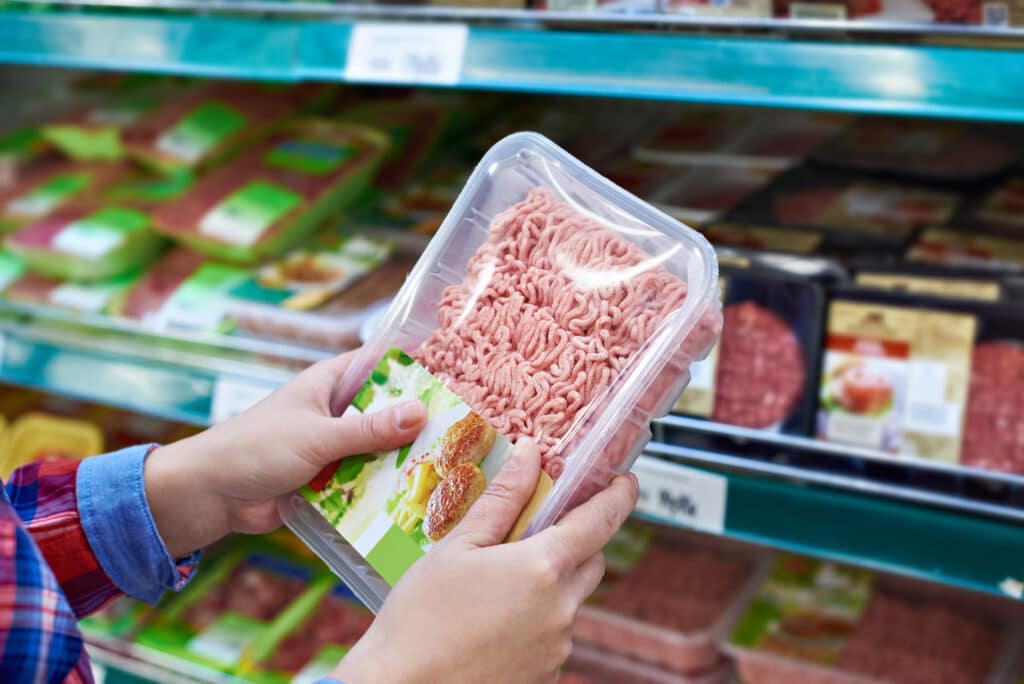
Choosing the right label for food packaging isn’t just about aesthetics or branding—although that’s a big part of it. The labels you use need to hold up in various environments, from steaming hot food containers to frosty freezer bags.
Here’s what happens when you choose the wrong label:
- Labels on hot food containers can melt, peel, or become unreadable.
- Labels on cold food packaging might freeze and fall off, making it impossible to track products or share critical information.
- Labels with weak adhesives can detach, potentially leading to food safety concerns or even non-compliance with health standards.
In short, if your labels can’t withstand the temperature, you risk damaged branding and non-compliant packaging. Let’s make sure you choose the right label for every situation.
The Best Labels for Hot Food Packaging
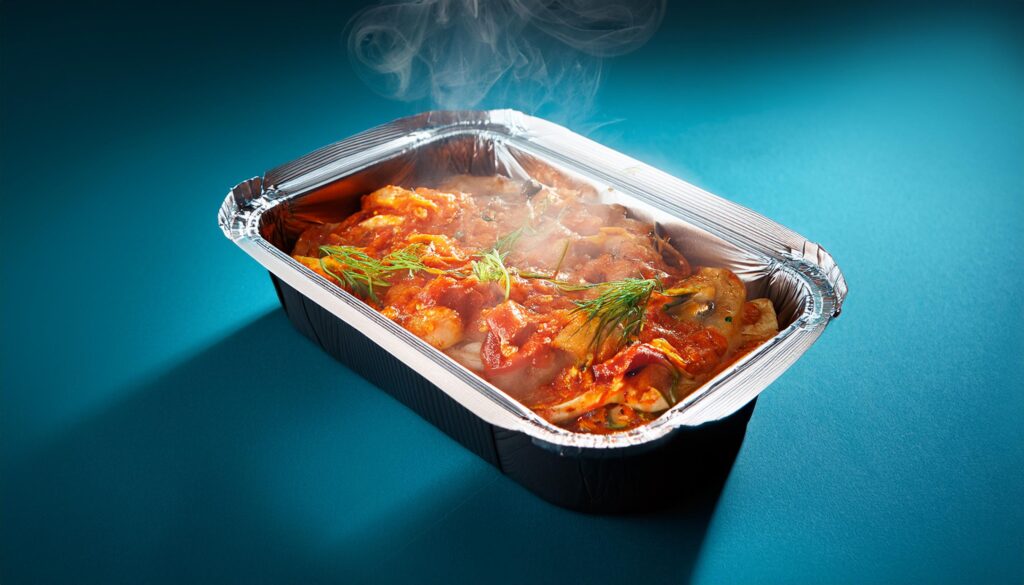
When dealing with hot food packaging, heat resistance is key. You need a label that won’t melt, warp, or become unreadable under steamy conditions. Think about items like:
- Takeout from a restaurant.
- Hot meals from food trucks.
- Heated meal delivery services.
Key Features of Hot Food Labels
- High-Heat Resistance: Choose labels made from materials that can handle higher temperatures without melting or becoming brittle.
- Strong Adhesive: For hot foods, opt for a heat-tolerant adhesive that won’t peel off the packaging as soon as the food warms up.
- Oil and Grease Resistance: Hot food containers often get oily, so labels need to stay intact without being damaged by grease.
Best Label Options for Hot Foods: Check out our thermal transfer labels that hold up in heat and maintain legibility, making them perfect for hot food packaging.
The Best Labels for Cold Food Packaging
On the other hand, if you’re in the business of packaging cold items like frozen meals, ice cream, or chilled beverages, you need labels that can handle cold, wet conditions. Labels for cold food packaging face their own set of challenges, such as condensation and freezing temperatures.
Key Features of Cold Food Labels
- Cold-Temperature Adhesive: Choose labels with special adhesives designed for cold environments. These adhesives stay sticky even in freezing conditions, ensuring that the label remains securely attached to the packaging.
- Moisture Resistance: Cold items can create condensation, especially when moving from storage to a warmer environment. Your labels should resist moisture and remain readable.
- Durability: Cold food packaging often involves handling in rough conditions (like freezers), so labels need to be tough enough to withstand handling and storage.
Best Label Options for Cold Foods: For cold food packaging, we recommend our cold temp labels designed specifically to handle freezing temperatures and moisture. They stick reliably to frozen packages without peeling or smudging.
The Best Labels for Small Food Packaging
If your food business specializes in smaller food items—think pastries, pre-packaged snacks, or individual meals—then your labels need to be just as tailored. For small food packaging, readability and branding are key.
Key Features of Small Food Labels
- Compact Size: Labels need to fit small packages without covering important product windows or ruining the overall look.
- Clarity: Given the limited space, choose labels that are easy to read and clear about what the product is.
- Branding and Design: This is your chance to stand out. Small food labels should not only provide essential information but also give your product a professional and appealing look.
Best Label Options for Small Food Packaging: For smaller food packages, we offer a variety of custom-sized labels that can be tailored to fit your exact needs. Our round labels or rectangle labels are great choices for small, compact food items. You can browse options on our food packaging labels page.
Compliance Matters: Food Safety and Labeling Regulations
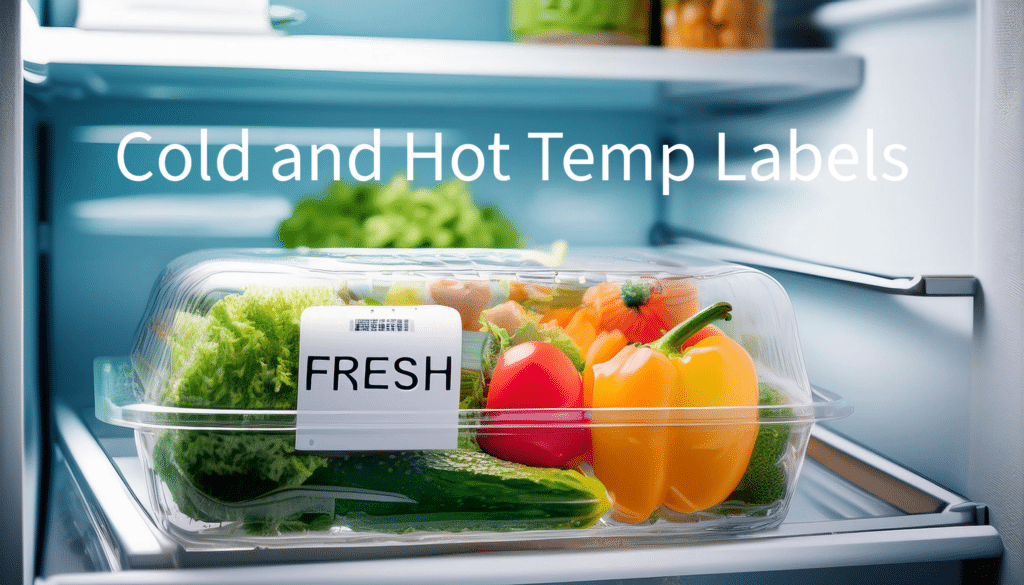
No matter what type of food you’re packaging—hot or cold—it’s critical to meet food labeling regulations. In the U.S., food labels are governed by the FDA, which mandates that labels include things like:
- Ingredient lists.
- Nutritional information.
- Allergen warnings.
Additionally, if you’re shipping food, it’s important to follow proper labeling regulations for food safety during transport, especially for perishable goods. You can find more on FDA food labeling regulations here.
By choosing the right food-safe labels for your packaging, you not only ensure compliance with regulations but also help your business avoid legal headaches.
Choosing the Right Label Material for Hot and Cold Food
Material matters when it comes to food packaging labels. Depending on the temperature, your label might need to be more heat-resistant or moisture-proof. Here are the top label materials for both hot food packaging and cold food packaging:
- Thermal Transfer Labels: Ideal for both hot and cold environments, these labels can handle temperature swings and still stay intact.
- Waterproof Labels: Perfect for cold, wet conditions, like frozen or chilled food items. They can withstand condensation without smudging or falling off.
- Greaseproof Labels: If you’re dealing with hot or greasy foods, greaseproof labels are a must to keep the labels clean and readable.
Keep Your Food Packaging Secure with the Right Labels
Choosing the best label for your food packaging can save you a lot of hassle down the road. Whether you’re dealing with piping hot meals or frozen foods, we’ve got you covered.
Check out our selection of shipping and packaging labels to find the perfect match for your products and packaging needs.

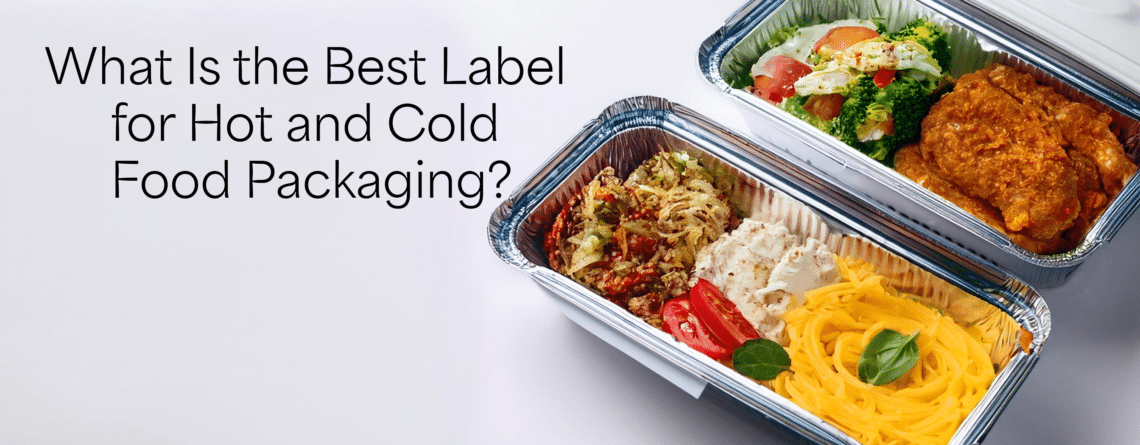



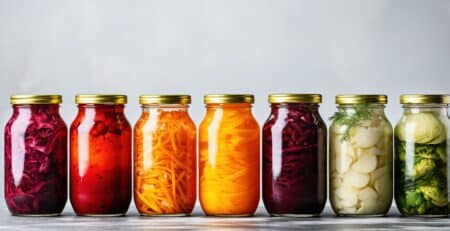



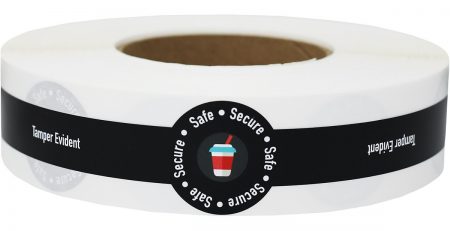



Leave a Reply